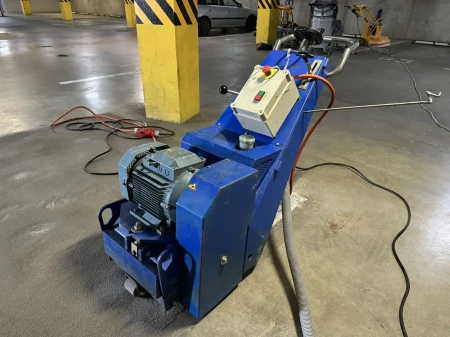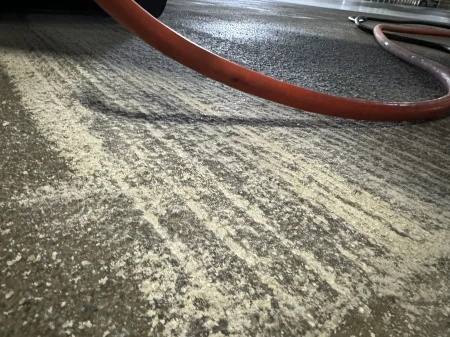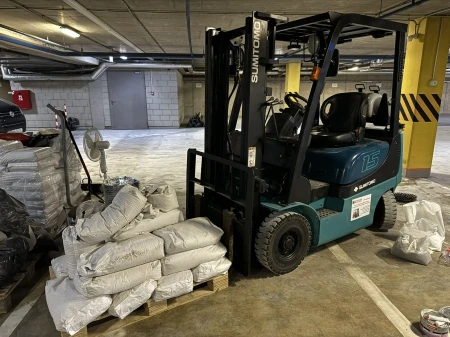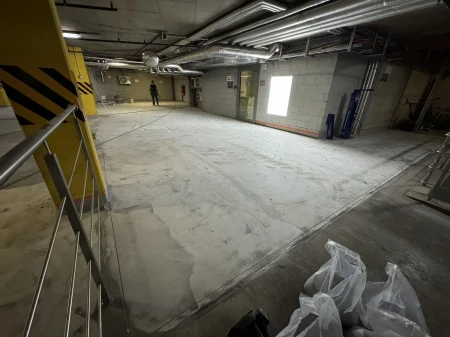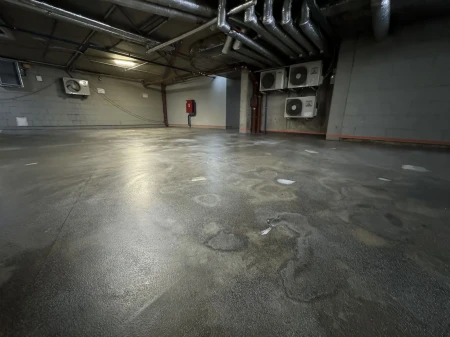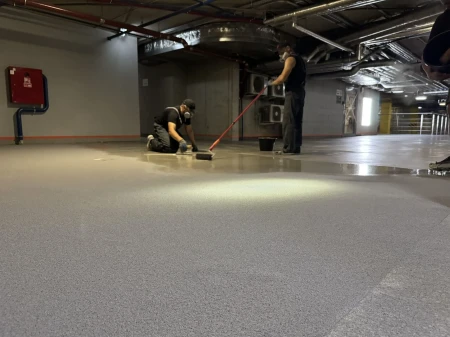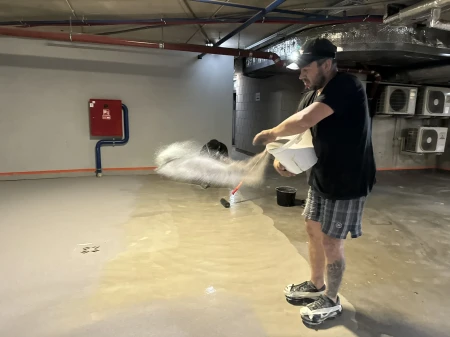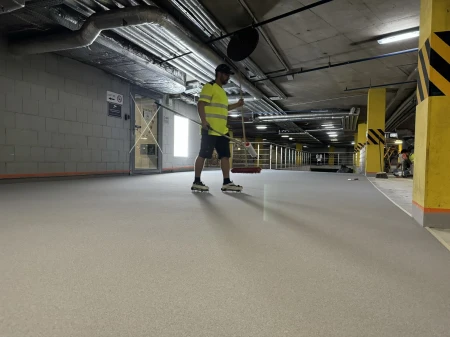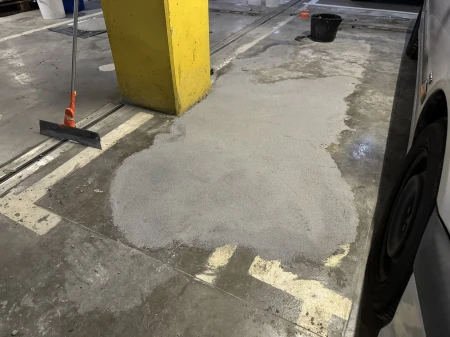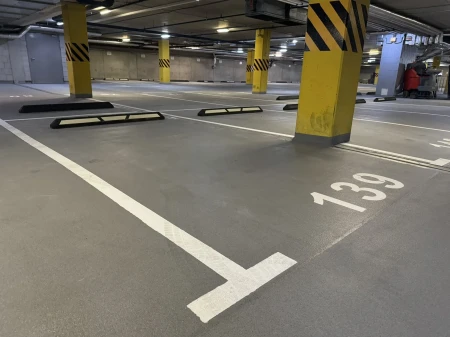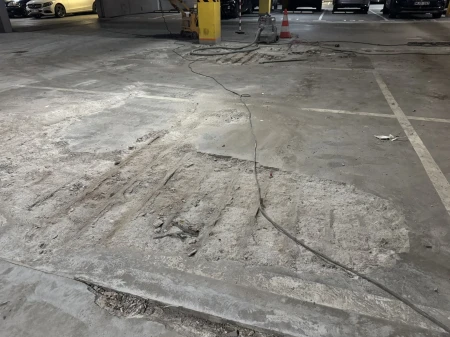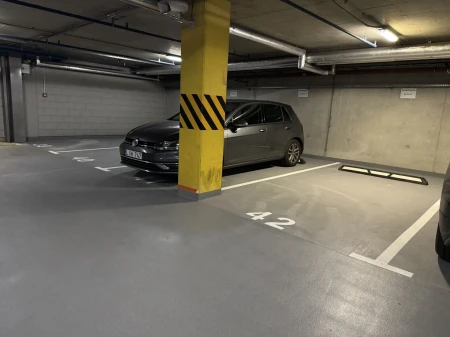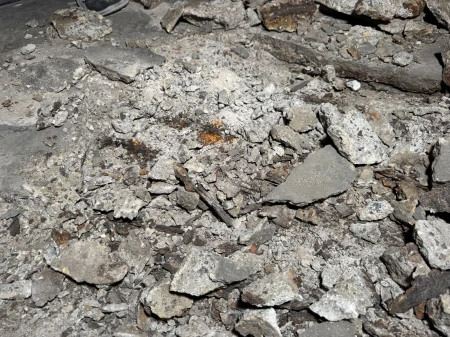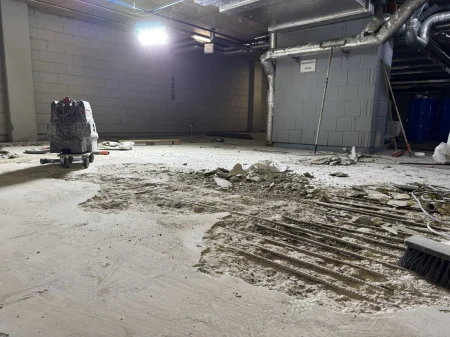Reasons for degradation of the top layer of concrete in parking lots, which required floor repairs
Parking lots located under buildings, although technically protected from direct exposure to rain and snow, are still exposed to weather conditions.
This is because most such facilities are not hermetically sealed — the temperature and humidity inside are similar to those outside. With a working area of 4,700 m², the problem of concrete peeling becomes serious and expensive to floor repair.
The main causes of damage to the top layer of concrete:
1. Temperature changes can cause concrete to expand and contract, causing micro-cracks and, over time, loosening of the top layers, which leads to floor repairs. In winter, parking lots are regularly exposed to water, which seeps into cracks, freezes, and expands, stretching the concrete structure. Furthermore, road salt accelerates the degradation process.
2. Repeated vehicle traffic on the surface of industrial flooring, especially heavy vehicles, wears away the thin layer of concrete, leading to localized damage (holes, voids, dusting). Poor maintenance of fresh concrete (drying too quickly, too low humidity during the setting stage) leads to the precipitation of fine particles from the top layer.
3. As a result of these processes, the top layer of concrete flakes off over time, creating gaps that affect not only the aesthetics but also the safety and durability of the entire surface. These are the main reasons for performing floor repairs.
Repair process - dismantling of weak points and repair using epoxy resin and sand.
To effectively restore the parking lot's functionality and prevent further degradation, professional repair of the damaged floor surface is necessary. This work is carried out in stages.
Mechanical removal (dismantling) of weakened concrete fragments, as well as concrete milling. Layers susceptible to loosening are removed—loose fragments, dust, and old coatings. This is done using milling machines, grinders, or impact hammers. After cleaning, the depth and extent of the damage are identified to avoid leaving any weak spots.
Substrate preparation and floor repair using epoxy resin and sand. Exposed surfaces are impregnated with a special epoxy resin to strengthen the concrete, close pores, and improve the adhesion of subsequent layers. Deeper damage is filled with an epoxy-based mortar with the addition of dry quartz sand, which increases the mechanical strength of the repaired layer and stabilizes the surface. After the restorations have cured, the surface is leveled and smoothed to the level of adjacent, sound areas.
Using epoxy resin at this stage ensures a durable, well-adhered substrate, ready for further renovation work. The next step may also involve installing a thin-layer commercial cement floor.
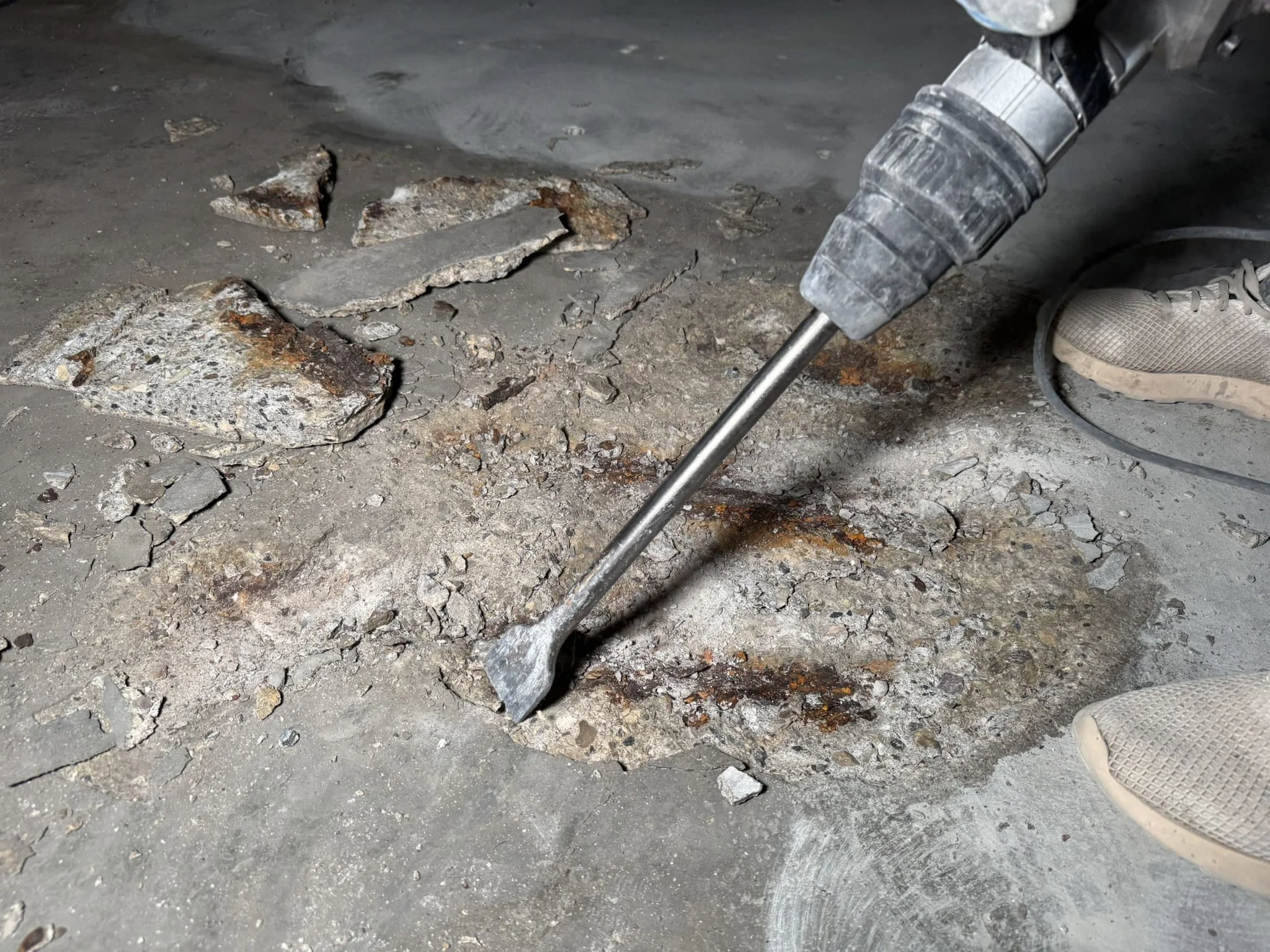
Applying methacrylic resin - properties and advantages in parking lots
The final stage of floor repair involves securing the entire parking lot surface with a special methacrylic resin. This modern method produces a durable, uniform, and highly wear-resistant coating.
Properties of methacrylic resin:
1. Methacrylic resin (MMA) is characterized by very fast curing, even at low temperatures (below 0°C). Full surface functionality can be restored within just a few hours of application. Thanks to its structure, methacrylic resin is resistant to micro-cracks in concrete industrial flooring resulting from temperature changes and also accommodates minor structural movements.
2. The MMA coating is resistant to salt solutions, oils, fuels, as well as beverages and other chemicals that parking infrastructure often encounters. The MMA bonds tightly to the underlying layers, ensuring long-lasting protection and preventing delamination even under heavy use. The smooth, non-porous surface prevents dirt from penetrating the concrete and is easy to remove, a significant advantage when repairing floors.
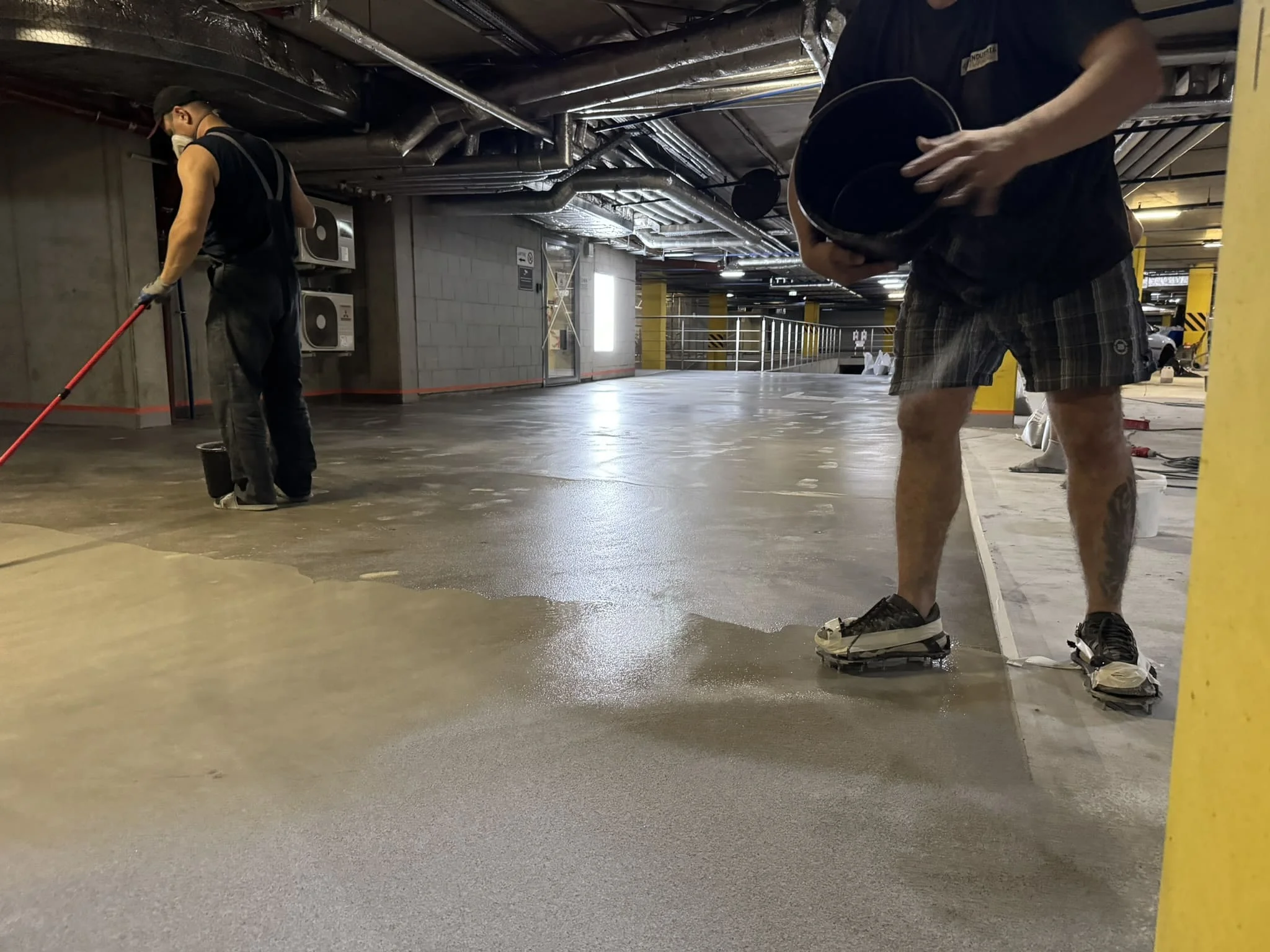
The application process of methacrylic resin floor:
1. The entire surface is then re-primed with an MMA-based primer, which increases the adhesion of the base coat. The resin is spread evenly over the entire surface using rollers, squeegees, or spraying, ensuring the appropriate coating thickness (usually 1.5-3 mm).
2. To enhance the anti-slip properties, special sand or aggregate can be mixed into the fresh resin. Once fully cured (2-4 hours), the surface is ready for reuse or concrete grinding.
Advantages of using methacrylic resin in parking lots:
1. Durability and resistance to intensive use, like polished concrete;
2. Reducing the risk of slipping and ensuring safety;
3. Aesthetic, modern look - can be colored, marked and marked;
4. Quick execution and short downtime of the parking lot (minimizing losses for the investor), which has a positive impact on the speed of work on floor repair.
The repair of the 4,700 m² parking surface includes removing weak spots in the concrete, reinforcing and filling the gaps with epoxy and sand, then securing the entire surface with an innovative methacrylic resin, and installing safety barriers. This renovation not only restores the surface's functional properties but also significantly extends its lifespan. Methacrylic resin is currently one of the best solutions for parking infrastructure – reliable, durable, and user-friendly.


